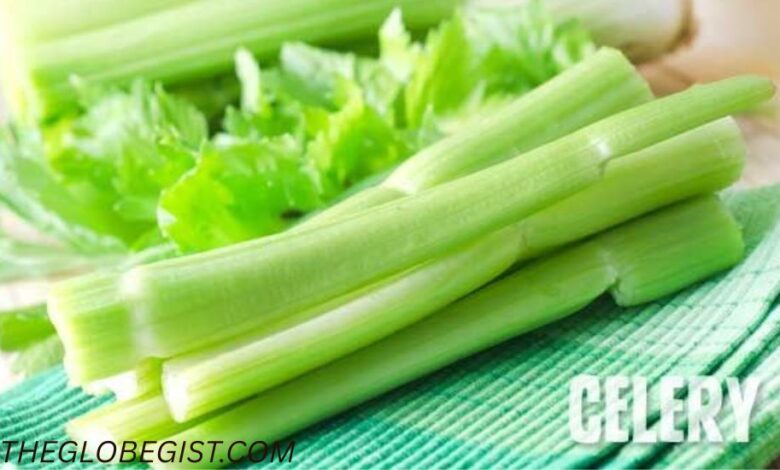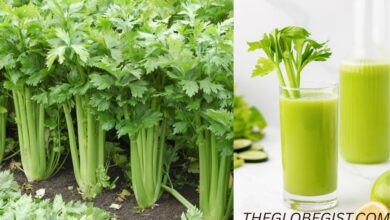Real Celery: Nutrition, Benefits, Culinary Uses, and Growing Guide

Real celery (Apium graveolens) is a humble vegetable that has been consumed for centuries, valued for its crunchy stalks, leafy greens, and aromatic seeds. Known in some languages as pravi celer (literally “real celery”), this versatile plant has played a vital role in traditional diets, natural medicine, and even modern food trends like celery juice. Today, real celery is recognized worldwide not only as a kitchen staple but also as a health-supporting food rich in nutrients.
In this article, we will explore everything about real celery—its nutrition, health benefits, popular uses, and practical tips for growing and storing it at home.
What Is Real Celery?
Real celery is a marshland plant belonging to the Apiaceae family, which also includes parsley, fennel, and carrots. The plant is characterized by:
-
Stalks: Long, crisp, fibrous stems, usually pale green in color.
-
Leaves: Bright green, aromatic, and often used as a garnish or in soups.
-
Seeds: Tiny, aromatic seeds that are often ground for seasoning or used in extracts.
There are three main cultivated varieties of real celery:
-
Stalk celery – the type most common in supermarkets.
-
Celeriac (celery root) – grown for its knobby root, used in soups and mashes.
-
Leaf celery – valued mainly for its strong-flavored leaves.
Nutritional Profile of Real Celery
Celery is low in calories yet packed with important vitamins and minerals. A cup of chopped raw celery (about 100 g) typically provides:
-
Calories: ~14
-
Protein: 0.7 g
-
Carbohydrates: 3 g
-
Fiber: 1.6 g
-
Vitamin K: 30–40% of daily needs
-
Folate, Potassium, Vitamin C, and Vitamin A in smaller but valuable amounts
Celery is made up of about 95% water, making it excellent for hydration. Despite being low in calories, its micronutrient content makes it a nutrient-dense vegetable.
Health Benefits of Real Celery
1. Supports Heart Health
Celery is naturally rich in potassium and nitrates, which may help regulate blood pressure. The antioxidants and phytochemicals in celery also contribute to better cardiovascular function.
2. Anti-Inflammatory Properties
Celery contains compounds like apigenin and luteolin, which have anti-inflammatory and antioxidant effects. These can help reduce oxidative stress in the body.
3. Digestive Health
The high water and fiber content in real celery support healthy digestion and can help prevent constipation. Celery juice, though trendy, contains less fiber than whole celery.
4. Weight Management
Because celery is low in calories and high in fiber, it promotes fullness and can support weight loss when combined with a balanced diet.
5. Rich in Antioxidants
Celery contains over a dozen antioxidant compounds, which protect cells and tissues from free radical damage.
Celery Juice: A Modern Trend
In recent years, celery juice has become a global health trend, with enthusiasts claiming it improves digestion, detoxifies the body, and even boosts skin health. While drinking celery juice can provide hydration, vitamins, and antioxidants, scientific studies show that it is not a miracle cure. Experts suggest consuming whole celery whenever possible to benefit from its fiber content, which is mostly lost in juicing.
Culinary Uses of Real Celery
Real celery is one of the most versatile vegetables in the kitchen. Common uses include:
-
Raw snacks: Served with dips like hummus or peanut butter.
-
Soups and stews: Used in mirepoix (celery, onion, carrot) as a flavor base.
-
Salads: Adds crunch and freshness to green or mixed salads.
-
Pickling: Celery sticks can be pickled for a tangy snack.
-
Celery leaves: Chopped and added to broths, stews, or pesto.
-
Seeds and spice blends: Used in seasoning, pickling spice, and sauces.
From fine-dining recipes to simple family meals, celery’s versatility ensures its place in countless dishes worldwide.
Growing Real Celery at Home
Celery can be somewhat challenging to grow, but with patience, it can thrive in a home garden.
Growing Conditions
-
Soil: Rich, moist, well-drained soil.
-
Light: Full sun for at least 6 hours daily.
-
Water: Requires consistent watering to prevent stringy stalks.
Planting Tips
-
Start seeds indoors 8–10 weeks before the last frost.
-
Transplant seedlings to the garden once temperatures warm.
-
Mulch around plants to retain soil moisture.
Harvesting
Celery stalks are usually ready for harvest after 3–4 months. Cut individual stalks as needed, or harvest the entire plant when mature.
Buying and Storing Real Celery
When buying real celery, look for:
-
Firm, crisp stalks
-
Vibrant green leaves without yellowing
-
No signs of wilting
For storage:
-
Keep celery wrapped in foil in the refrigerator to maintain freshness.
-
Avoid storing in plastic bags, as this can trap moisture and cause spoilage.
Safety and Precautions
While celery is safe for most people, a few considerations should be noted:
-
Allergies: Some individuals may have celery allergies, especially to celery seeds.
-
High sodium juices: Some commercial celery juices or powders may contain added sodium.
-
Medication interactions: Celery extracts may interact with blood pressure medications or blood thinners—consult a healthcare provider if in doubt.
Conclusion
Real celery is far more than just a crunchy snack. From its impressive nutrient profile and health benefits to its diverse culinary applications and gardening potential, it is a vegetable that truly deserves its reputation as a dietary staple. While celery juice continues to be a wellness trend, the real power of celery lies in its whole form—hydrating, nourishing, and incredibly versatile.
For those looking to improve their diet with nutrient-rich, low-calorie foods, real celery is a simple yet powerful choice. At The Globe Gist, we believe in exploring the truth behind everyday foods, and real celery is a perfect example of a humble plant offering powerful health and lifestyle benefits.
you may also read about: Pravi Celer
Q1: What is real celery?
Real celery (Apium graveolens) is a green vegetable known for its crunchy stalks, leafy tops, and aromatic seeds. It is commonly eaten raw, cooked, or juiced.
Q2: Is real celery good for weight loss?
Yes. Real celery is low in calories, high in fiber, and mostly water, which helps promote fullness and supports weight management.
Q3: What nutrients are in real celery?
Celery contains vitamin K, potassium, folate, vitamin C, and antioxidants, while being very low in calories.
Q4: Is celery juice healthier than whole celery?
Celery juice provides hydration and nutrients but lacks the fiber found in whole celery. Whole celery is generally better for digestion and overall health.
Q5: Can real celery cause allergies?
Yes. Some people are allergic to celery, especially the seeds. Symptoms may include skin reactions, swelling, or difficulty breathing.
Q6: How do you store real celery to keep it fresh?
Wrap celery in aluminum foil and store it in the refrigerator. This method helps maintain crispness longer than plastic storage.
Q7: Can you grow real celery at home?
Yes. Celery can be grown in rich, moist soil with plenty of sun and consistent watering. It takes around 3–4 months to mature.
Q8: What are celery seeds used for?
Celery seeds are used as a spice in pickling, soups, and seasoning blends. They are also sold in extracts and supplements.
Thanks for read our article if you want more like this kind of article visit our site The Globe Gist, and comment us. We provide authentic & comprehensivf information to our readers.



